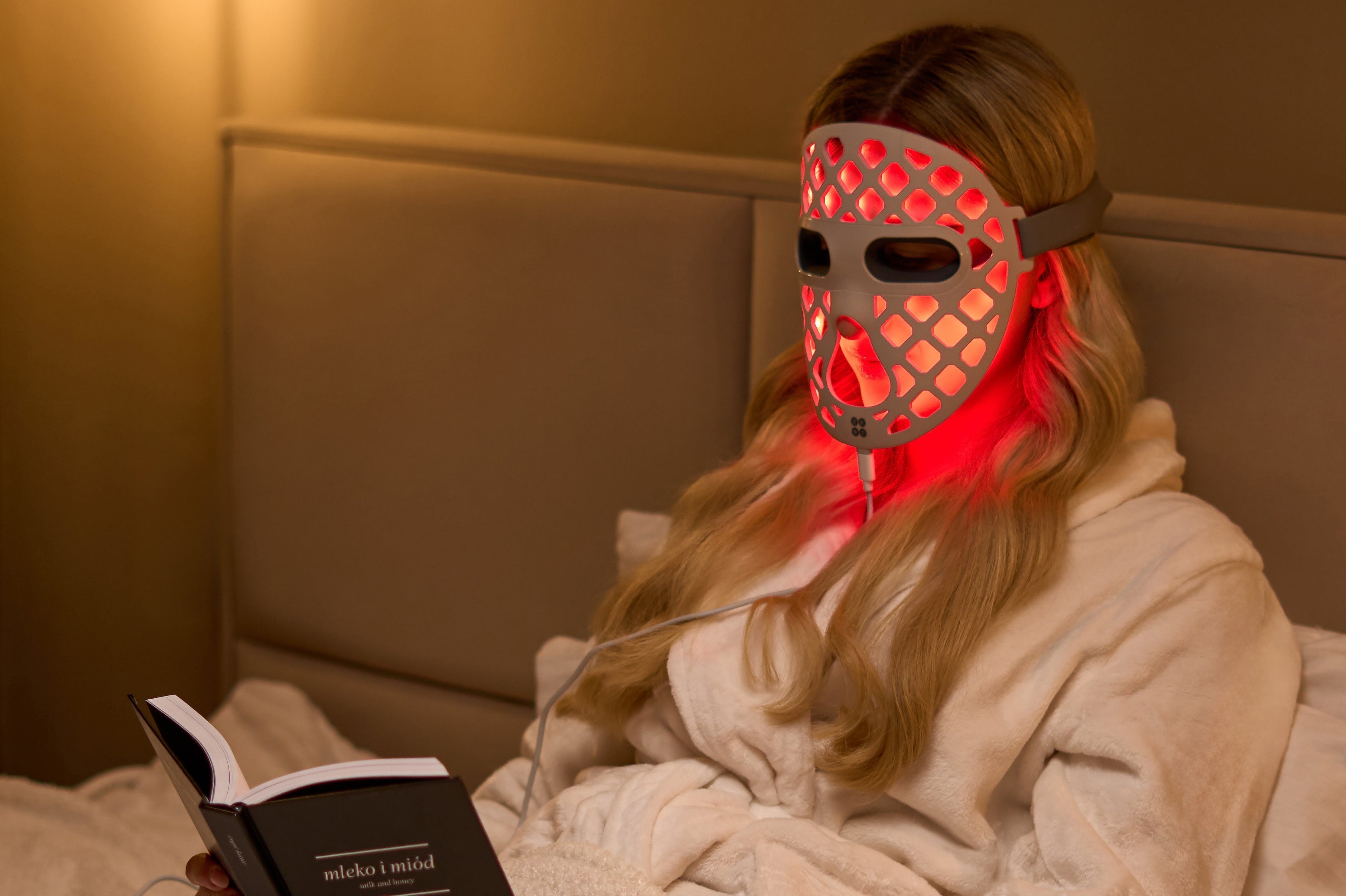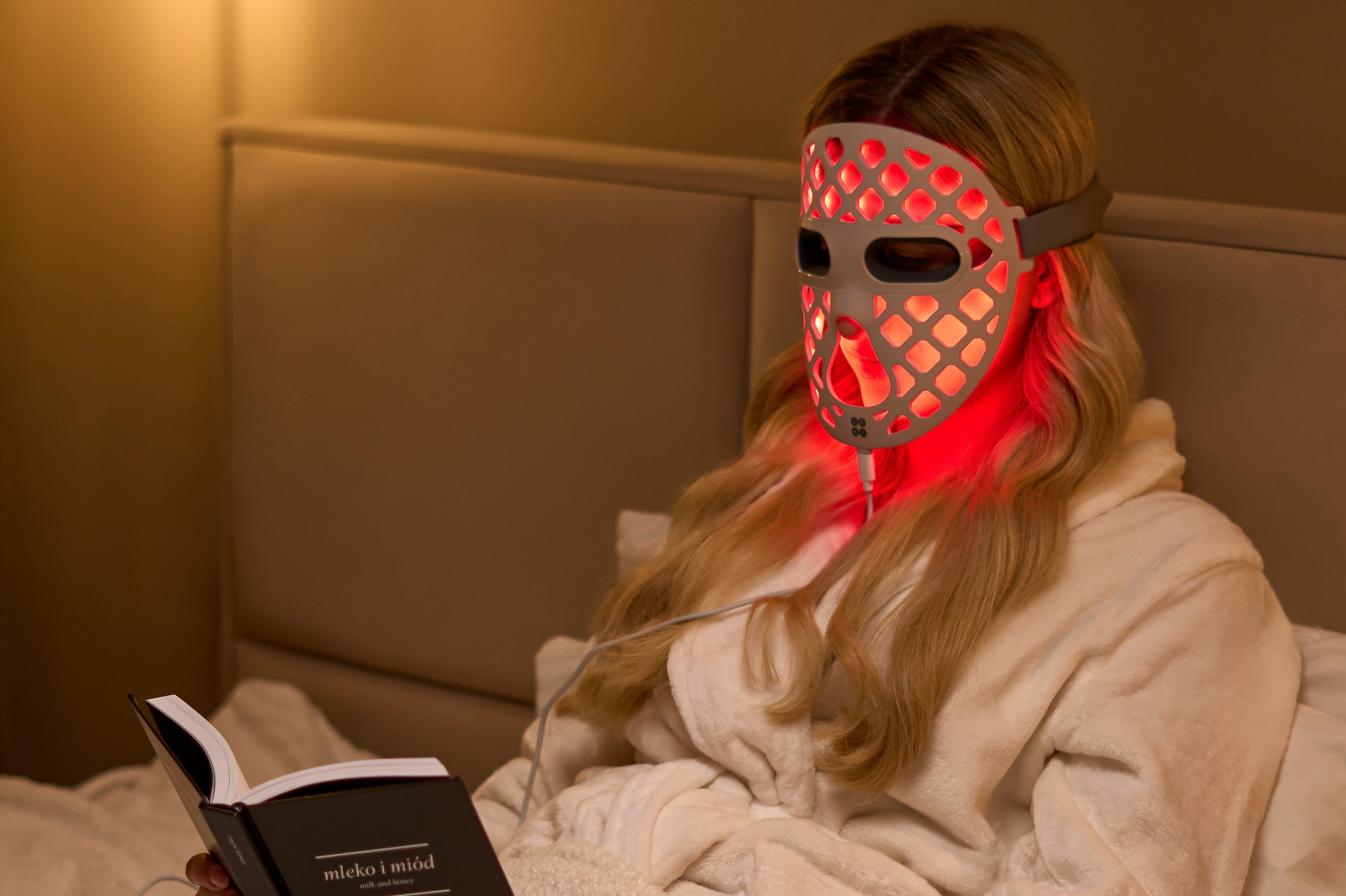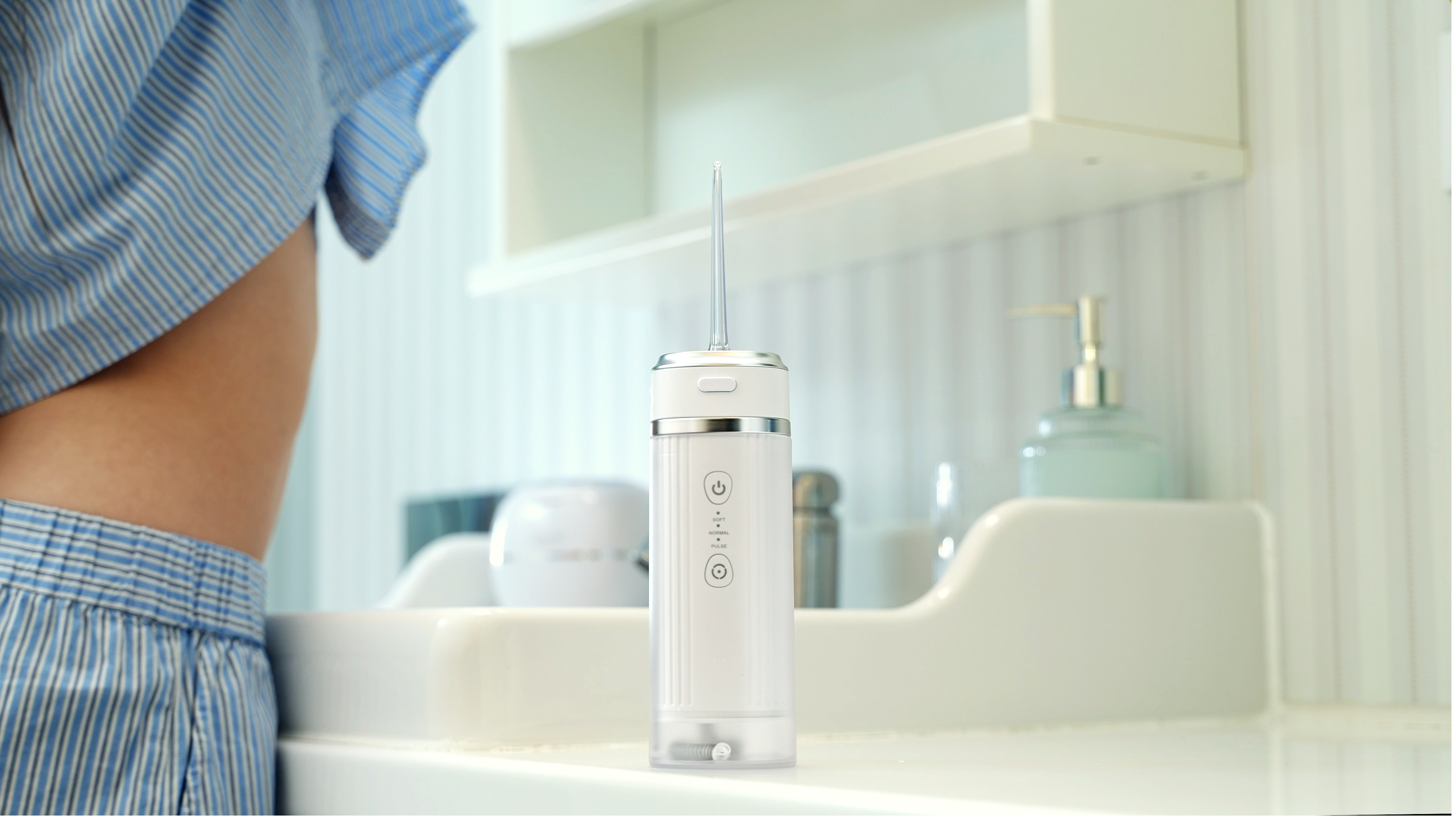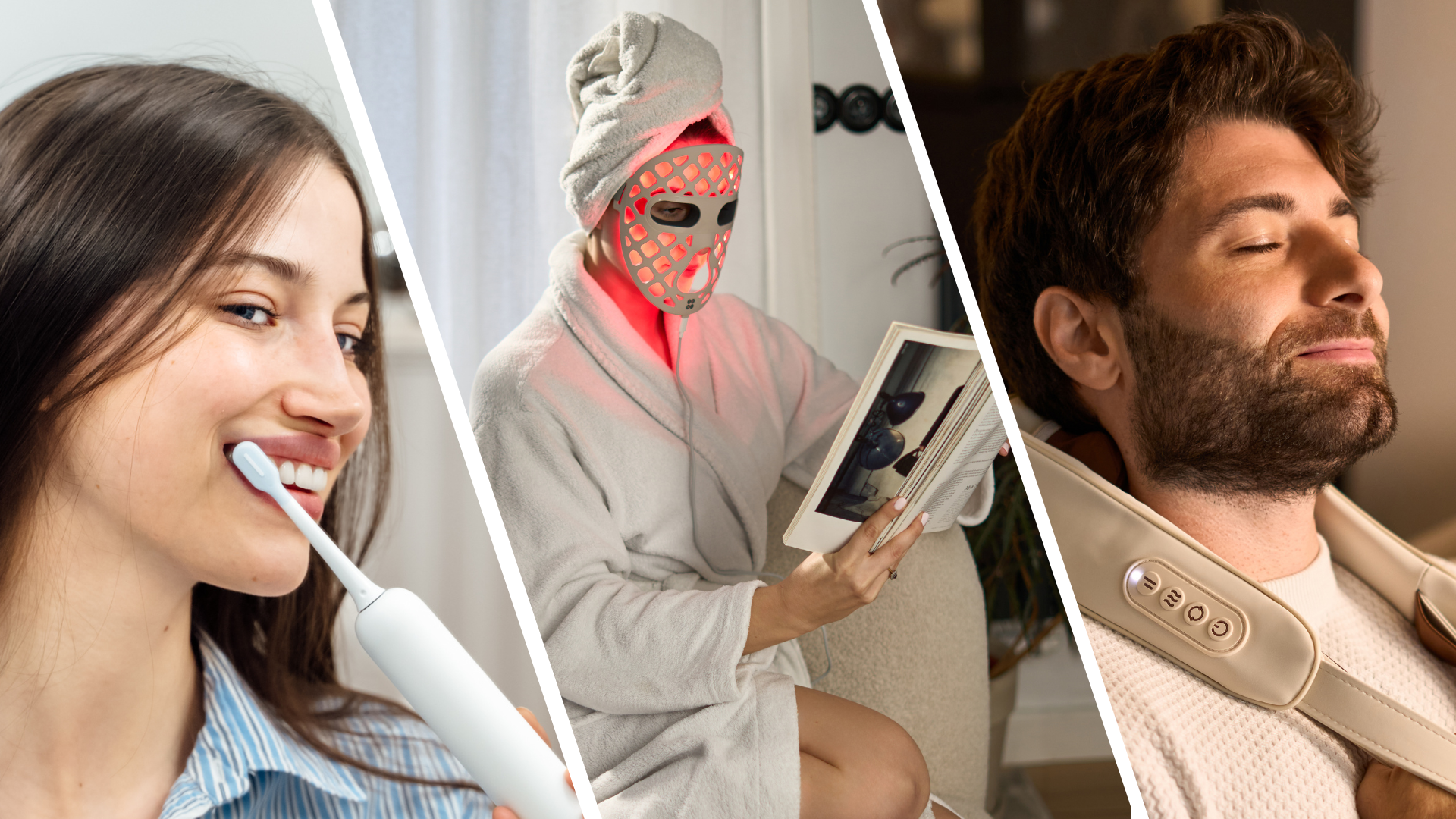Wondering if an LED face mask is just another gadget or an effective skincare tool? The truth is that a properly chosen LED mask can significantly improve your skin's condition – provided you know which one is worth buying.
How does an LED mask work and why is it worth having?
The LED mask uses different wavelengths of light that penetrate deeper layers of the skin and stimulate natural regeneration processes.
- Red light (630–670 nm) supports collagen production, making the skin more elastic and smoother [1].
- Blue light (415 nm) has antibacterial effects, so it helps fight acne and reduces inflammation [2].
- Yellow light (565–590 nm) improves microcirculation and reduces red spots [3].
- Infrared (850 nm) penetrates the deepest and accelerates healing and cell renewal [4].

These effects are due to so-called photobiostimulation, a process in which light provides cells with energy. Thanks to this, they work more efficiently: they renew faster, remove toxins better, and produce substances responsible for a youthful appearance more intensively [5].
What to look for when choosing an LED face mask?
Wavelength precision and design
Even coverage of the skin with light depends not only on the number of diodes but primarily on the mask's design. Key factors are:
- fit to facial contours (flexible masks minimize “dead zones"),
- light emission angle (a wide angle means better dispersion),
- distance of diodes from the skin.
A well-designed mask with fewer diodes can be more effective than a cheaper model with many light sources placed too far away or at the wrong angle [6].
Equally important is the precision of wavelengths – effective LED masks use specific values (e.g., 415 nm for blue, 630 nm for red, 590 nm for yellow, 850 nm for infrared), not approximate ranges that limit the therapeutic effect. The best models offer at least 4 types of light to comprehensively address various skin issues [7].
Design and distance from the skin
This is often an overlooked aspect but crucial for comfort and effectiveness. Masks that fit directly to the face can cause localized overheating or uneven lighting.
A better solution is a 3D design that keeps the diodes at a small distance from the skin (about 1–2 cm) – the light is then evenly diffused and works more effectively. The LED face mask should also be made of breathable material, preferably medical silicone, so the skin does not suffocate during sessions [8].
Weight and comfort of use
If the mask weighs more than 150–200 g, you may feel discomfort after a few minutes. The latest models, such as ZENT® DermaLight™ With 216 diodes, they weigh about 93 g – almost three times less than older, heavy silicone masks. This difference means you can comfortably use the device while relaxing, without suffering from pressure on your nose and cheeks.

LED face mask – user reviews. What do studies say?
According to clinical studies, regular use of LED phototherapy for 8–12 weeks increases collagen synthesis and reduces the visibility of fine wrinkles by an average of 30–40%. [9].
Users in LED mask reviews most often highlight improved skin tone, reduced redness, and fewer breakouts after just 4–6 weeks of use.
However, it is worth remembering that an LED face mask is not a temporary solution. Results appear gradually, so regularity is key – ideally 3–4 times a week for 15–20 minutes [10].
How much does a good LED mask cost and is it worth investing in?
LED mask prices range from 200 to even 3000 PLN. The cheapest models often fail in terms of light wave precision and durability. The golden mean is devices in the 800–1500 PLN range – they have an adequate number of diodes, safety certificates (IP67), and decent build quality.
When choosing an LED mask, focus on three key parameters: precise wavelengths (specific values, not ranges), a design that ensures even coverage, and weight and comfort of use (lightweight, breathable, with the right distance from the skin).
Check reviews from other users, compare the LED mask rankings, and make sure the device has safety certificates. Remember, the most expensive face mask is not always the best – the quality of the diodes, ease of use, and your consistency in use matter.
FAQ – most frequently asked questions
Is an LED face mask safe?
Yes, provided it has CE certificates and the appropriate waterproof rating (e.g., IP67). Avoid use if you are pregnant, have epilepsy, or are taking photosensitizing medications. An integrated eye shield is also important.
How often should you use an LED mask?
The optimal frequency is 3–4 times a week for 15–20 minutes. More does not mean better – the skin needs time to regenerate between sessions.
Do LED masks work for every skin type?
Yes, but choose the appropriate light color for your needs: red for mature skin and wrinkles, blue for acne-prone skin, yellow for sensitive and vascular skin.
REFERENCES













